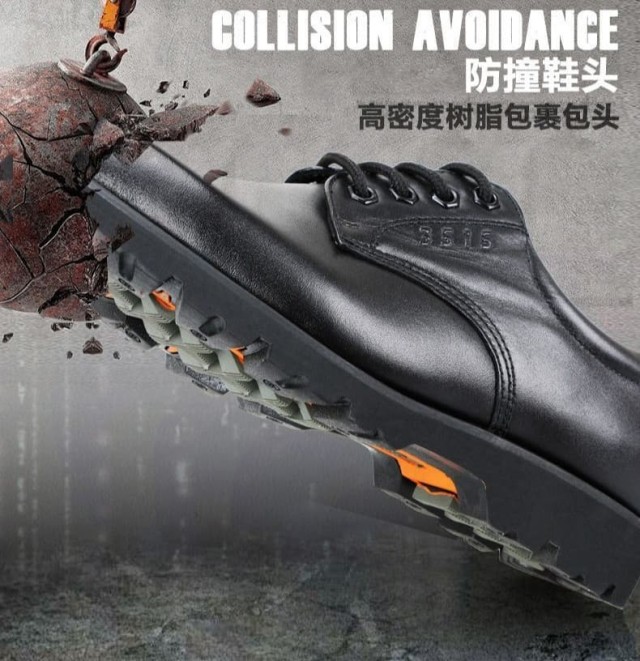Selecting the right safety boots isn’t just about compliance—it’s about creating a barrier between workers and preventable injuries. With workplace hazards ranging from falling objects to electrical currents, the ideal boot must align with three core factors:
- Hazard-Specific Protection (e.g., impact-resistant toes for construction, electrical insulation for utilities)
- Regulatory Compliance (ASTM/OSHA standards tailored to industries like mining or oil/gas)
- Long-Term Wearability (anti-fatigue designs for 12-hour shifts, slip-resistant soles for wet floors)
Below, we break down how to evaluate these priorities, backed by safety standards and material science.
Choosing Safety Boots for Hazard-Specific Work Environments
Matching Toe Protection to Physical Risks
Lead with the conclusion: Steel or composite toes are non-negotiable for heavy industries, but material choice depends on the force and frequency of impacts.
- Steel toes (ASTM F2413 I/75) withstand up to 75 pound-force impacts—critical for construction sites with falling tools.
- Composite toes offer similar protection with lighter weight, preferred for high-mobility roles like warehouse work.
- Avoid aluminum toes in extreme heat (e.g., foundries), as they conduct temperature more readily.
Reflective question: How often do your workers handle heavy equipment? A boot labeled "I/75" (impact-resistant) paired with "C/75" (compression-resistant) suits environments with rolling barrels or machinery.
Electrical Safety and Material Compliance
For utilities or oil/gas workers, static electricity or live wires demand boots with:
- EH-rated (Electrical Hazard) soles to reduce shock risks.
- Non-conductive materials like TPU outsoles, which resist oils and insulate up to 18,000 volts (per OSHA 29 CFR 1910.137).
Reference insight: Oil/gas boots often combine EH ratings with metatarsal guards—a shield over the laces to deflect pipe drops.
Weather Resistance and Workplace Climate Demands
- -40°F to 500°F ranges: Insulated liners (Thinsulate™) for cold storage, heat-resistant soles for welding.
- Wet environments: TPU outsoles outperform rubber in oil-rich settings, reducing slip risks by ~30% (per NIOSH traction studies).
Navigating Safety Standards and Certifications
Decoding ASTM/OSHA Labels for Boot Selection
Boot tags like ASTM F2413-18 indicate tested protections:
- "M" (Metatarsal guard)
- "Mt" (Puncture-resistant midsole)
- "SR" (Slip-resistant)
Pro tip: Construction boots in the U.S. must meet ASTM F2413, while EU sites require EN ISO 20345 (with a "S1" to "S3" safety grade).
Industry-Specific Compliance
- Mining: Look for MSHA approval (ventilation for underground gases).
- Energy: NFPA 70E certification for arc flash protection.
Beyond Protection: Ergonomics and Long-Term Wearability
Anti-Slip Outsoles for Oil-Rich Environments
TPU soles dominate in oil/gas due to:
- Microgrooves that channel liquids away.
- Abrasion resistance, lasting 2–3× longer than standard rubber in chemical exposure.
Anti-Fatigue Technology in High-Mobility Jobs
For nurses or factory workers:
- Cushioned midsoles reduce joint stress during 10,000+ daily steps.
- Rockered soles promote natural foot motion, cutting fatigue by ~20% (per Journal of Occupational Ergonomics).
Upgrade Your Safety Footwear with 3515
Distributors and bulk buyers: Partner with 3515 to source boots engineered for your industry’s hazards—from ASTM-compliant toe caps to EH-rated insulation. Let’s reduce workplace injuries without sacrificing comfort.
Did we miss a critical feature for your sector? Explore our range to find your match.
Products You Might Be Looking For:
Explore customizable safety footwear for workplace protection
Related Products
- Wholesale Customizable Suede Safety Boots - Puncture-Proof with Velcro Closure
- Customizable Anti-Smash Safety Boots for Wholesale & Private Label Manufacturing
- Athletic Safety Shoes with Dial Closure & Steel Toe for Wholesale & Custom Manufacturing
- Wholesale Mesh Steel Toe Safety Shoes with Dial Closure Factory Production
- Durable Mid-Cut Tactical Boots for Wholesale & Private Label
Related Articles
- How Safety Work Boots Engineer Protection: Features and Standards for Targeted Hazard Mitigation
- How to Choose Work Boots That Balance Safety, Comfort, and Durability for Your Job
- How to Choose Work Boots That Match Your Job Demands and Safety Needs
- Steel Toe Work Boots: Balancing Safety and Comfort for Demanding Jobs
- How to Choose Work Boots That Match Your Job's Safety Demands



















